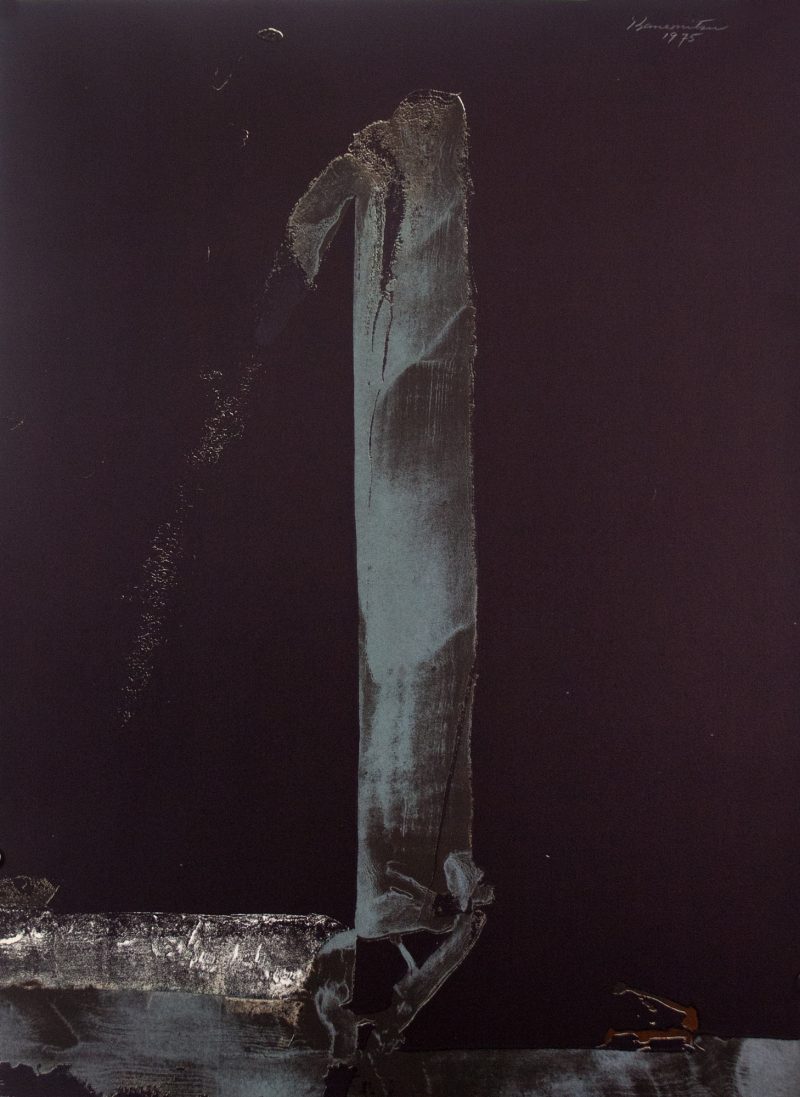A painter associated with the New York Abstract Expressionist School, Matsumi Kanemitsu achieved abstract imagery that often reflected the forces of nature. He worked all of his life with Japanese sumi ink and brushes, maintaining that the dramatic effects of color painting could also be achieved in black and white and the gradations between them.
Kanemitsu was raised in a suburb of Hiroshima, Japan, and came to America in 1940 to pursue a higher education and enlisted in the U.S. Army in 1941. After the Japanese attack on Pearl Harbor, he was arrested and sent to a series of army detention camps. In the post-war years, Kanemitsu moved to the East Coast, studying under Karl Metzler, Harry Sternberg, Yasuo Kuniyoshi, and Ad Reinhardt. In 1961 he earned a Ford Foundation grant to work at the Tamarind Lithography Workshop in Los Angeles and readily translated the techniques of sumi painting into lithography.
He taught in Los Angeles at the Chouinard Art School from 1965 to 1970 and at the Otis Art Institute from 1971 to 1983. His artworks are in public collections such as the Museum Ludwig, Cologne, Germany, and the Tate Gallery, London.
More Information

